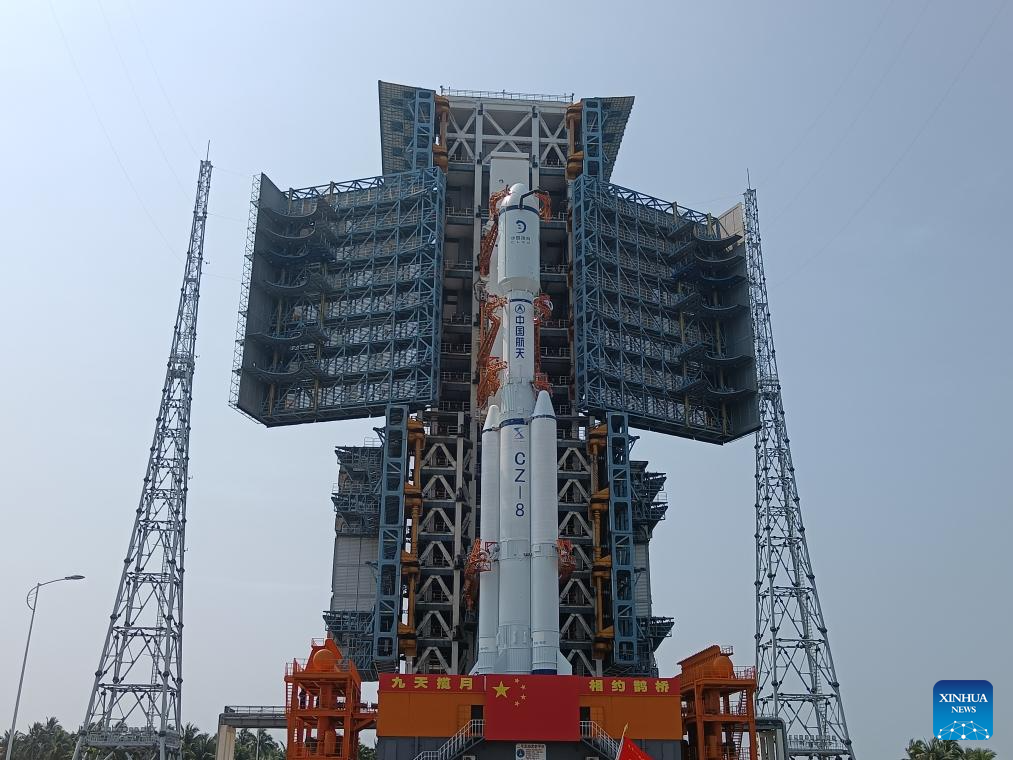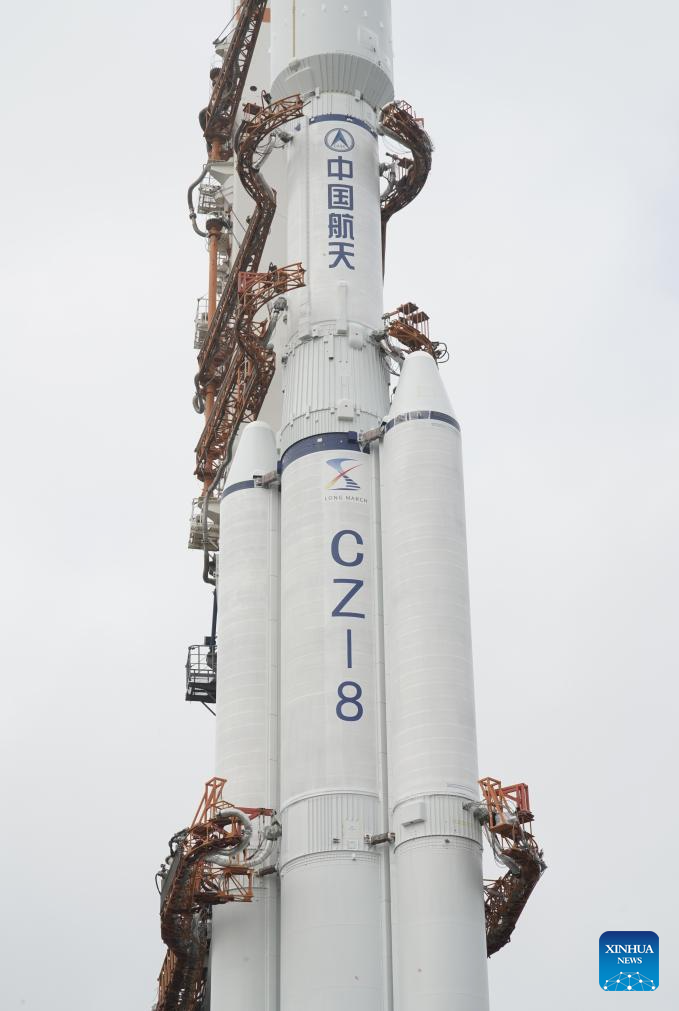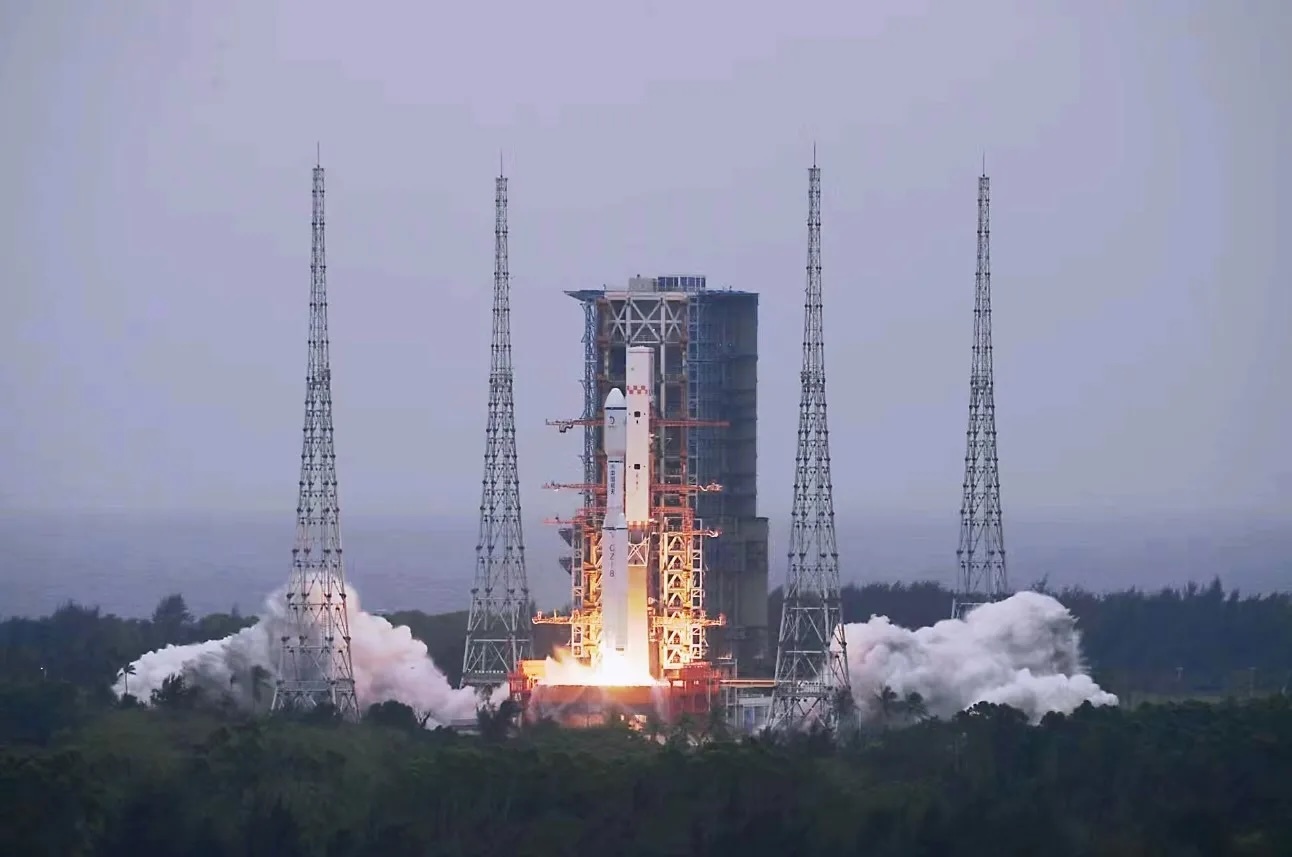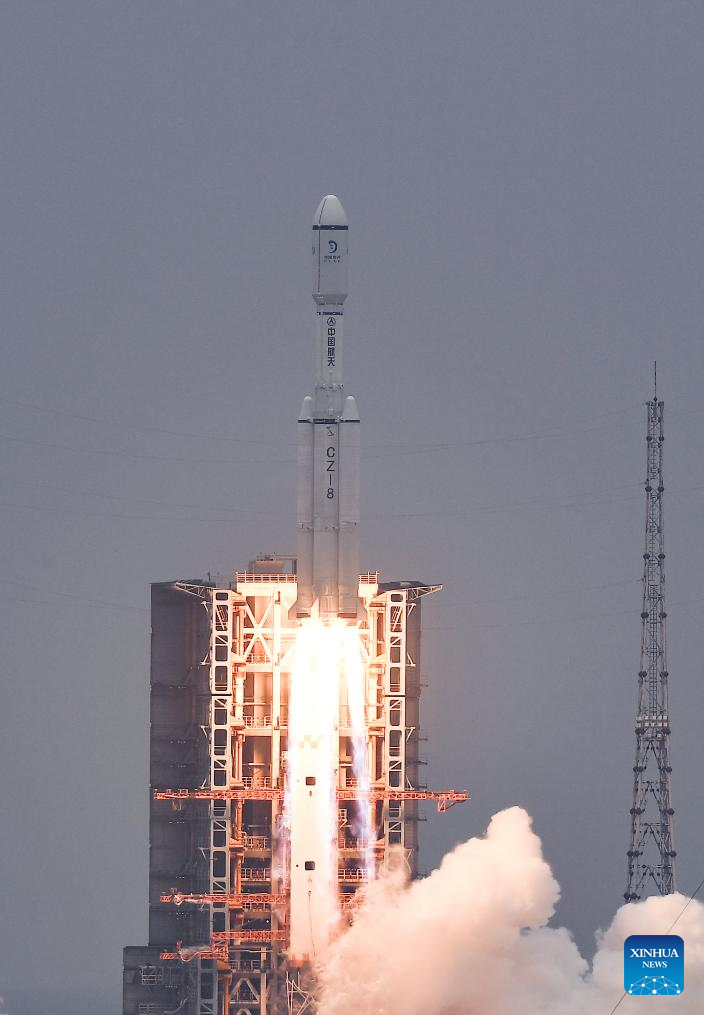18.03.2024
China prepares to launch relay satellite Queqiao-2

The combination of the relay satellite Queqiao-2 and the Long March-8 Y3 carrier rocket is vertically transferred to the launching area at the Wenchang Space Launch Center in south China's Hainan Province, March 17, 2024. The satellite is projected to be launched at an appropriate time within the next few days, according to the China National Space Administration (CNSA). (Photo by Huang Guochang/Xinhua)
The combination of the relay satellite Queqiao-2 and the Long March-8 Y3 carrier rocket was vertically transferred on Sunday to the launching area at the Wenchang Space Launch Center in south China's Hainan Province.
The satellite is projected to be launched at an appropriate time within the next few days, according to the China National Space Administration (CNSA).
The combination on a removable launch pad was moved out of the vertical test building of the launching site in the morning, and then safely transported to its launching area.
The rocket check, the joint test work and the propellant filling will be carried out before the launch, according to the CNSA.
Queqiao-2, or Magpie Bridge-2, will serve as a relay platform for the fourth phase of China's lunar exploration program, providing communications services for the Chang'e-4, Chang'e-6, Chang'e-7, and Chang'e-8 missions.

The combination of the relay satellite Queqiao-2 and the Long March-8 Y3 carrier rocket is vertically transferred to the launching area at the Wenchang Space Launch Center in south China's Hainan Province, March 17, 2024. The satellite is projected to be launched at an appropriate time within the next few days, according to the China National Space Administration (CNSA). (China National Space Administration/Handout via Xinhua)
Quelle: Xinhua
----
Update: 20.03.2024
.
China launches Queqiao-2 relay satellite to support moon missions

A Long March 8 lifts off from Wenchang spaceport, March 19 Eastern, carrying the Queqiao-2 lunar relay satellite. Credit: CNSA
HELSINKI — China launched its Queqiao-2 relay satellite Tuesday to support upcoming lunar far side and south polar missions.
A Long March 8 rocket lifted off from Wenchang Satellite Launch Center at 8:31 p.m. Eastern, March 19 (0031 UTC March 20). The China National Space Administration (CNSA) confirmed the Queqiao-2 satellite was on a trajectory towards the moon around 40 minutes after launch.
CNSA stated Queqiao-2 had deployed its solar arrays and was in its predetermined orbit with a perigee of 200 kilometers and an apogee of 420,000 kilometers.
The 1,200-kilogram satellite carries a 4.2-meter parabolic antenna and is part of China’s plans for future lunar exploration and a stepping stone towards building a lunar base in the 2030s.
The spacecraft will enter a highly elliptical lunar orbit inclined by 55 degrees once it reaches the moon. The orbit is specially designed to support China’s Chang’e-6 lunar far side sample return mission, due to launch in May. The far side of the moon never faces the Earth, as the planet’s gravity has slowed the rotation of the moon over time.
Queqiao-2 will have line of sight to both Chang’e-6—which is targeting Apollo crater in the southern hemisphere of the far side—and Earth for a large portion of its orbital period.
The spacecraft will later alter its orbital period to better support the Chang’e-7 and Chang’e-8missions to the lunar south pole later in the decade.
These later missions are planned to detect volatiles and potential resources on the moon and test in-situ resource utilization techniques, such as using lunar regolith to produce bricks. The missions are precursors to the International Lunar Research Station (ILRS).
Queqiao-2, or “Magpie Bridge-2”, is a more capable follow-up to Queqiao, launched in 2018. The earlier satellite facilitated the Chang’e-4 mission—the first-ever lunar far side landing. The aging Queqiao relay satellite remains operational in a halo orbit around the Earth-moon Lagrange point L2 roughly 70,000 kilometers beyond the moon.
Queqiao-2 will use X and UHF bands to communicate with Chang’e spacecraft. It will use S and Ka-bands for communications with Earth. It features multiple data rates and reconfigurable software.
The spacecraft could also support other countries’ lunar efforts. “Apart from providing relay support for future Chinese lunar missions, it is possible to provide relay communication services for other lunar landing exploration missions at the lunar south pole or lunar far side in the future,” an official from DFH Satellite, under the China Aerospace Science and Technology Corporation (CASC), said last year.
Queqiao-2 also carries payloads as part of the science objectives of the 2026 Chang’e-7 mission. These are an extreme ultraviolet camera, an array neutral atom imager and an Earth-moon length baseline very long baseline interferometry (VLBI) experiment.
Also aboard the launch were a pair of small, experimental satellites named Tiandu-1 and Tiandu-2. These will fly in formation in lunar orbit and conduct tests for navigation and communications technology verification.
Tests will include satellite-to-ground laser ranging and inter-satellite microwave ranging methods. The satellites are a pathfinder for the planned Queqiao lunar navigation and communication constellation.
China is aiming to launch around 100 times across 2024. The country’s previous launch, last week, saw the malfunction of an upper stage tasked with sending a pair of satellites towards the moon.
The upper stage appears to be in a very high high Earth orbit (HEO), someway short of reaching the moon. China has not provided updates on the mission since a terse report on the malfunction. It remains unclear if the mission can be salvaged.

Quelle: SN, Xinhua

